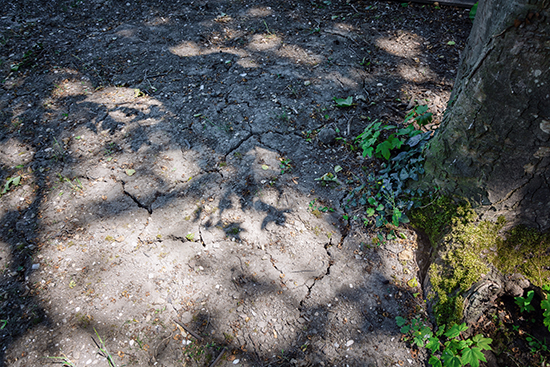Last month we were all wondering when the rain and low temperatures would stop and give way to the much-awaited spring. It was a lot wetter than the May months in the last three years.
Although it may have ruined many of our outdoor plans, this weather helped bring the groundwater level back to normal. Still, experts say that these wet months were not yet enough to recover from the drought that the last years’ dryness left behind.
A win for nature
Last month’s wet conditions were an opportunity to let nature recover from the last three years of extreme dryness. Too little rain, in combination with too high temperatures, led to problems in several places, from tree deaths and forest fires to houses sinking into peat soils.
Rob van Dongen, a hydrologist at the national forestry agency Staatsbosbeheer, says that in May, fens, streams and ditches went back to their normal water levels. Doreen Rugers, forest ranger at Staatsbosbeheer, agrees, saying that hundreds of orchids are already above ground level, which is a significant change compared to last year when they were much smaller and bloomed less.
And although this is good news, conservationists warn that one wet spring is far from enough to solve the problem. It will take a few years for nature to recover, and unfortunately, we can no longer repair some of the damage caused.
An uncertain future
As Rugers states, current weather conditions are not enough. The coming years are crucial, and a closer look should be taken at the entire water management system. “We now have a wet month, but we don’t know what the weather will do in the coming years. You can’t say in nature: today I see this, and that is the direct result of that.”
Structural solutions, which must include agreements between governments, water boards and other parties, are needed, and these will take time. Van Dongen says: “The only gain from the drought crisis of recent years is that we have come to realize that something needs to be done.”
Looking for solutions
The lesson is the need to take “structural measures in the design and management of the water system,” says agricultural hydrologist Gé van den Eertwegh. He states that his main advice of ‘not draining water but retaining it’ still happens too little. “There has been a new awareness in the last few years. Many local measures have been taken. Dikes retain water for longer so that the soil can benefit for longer. Dozens of farmers also work with culvert valves: inflatable balls close the drainage pipes, so that rainwater can no longer run away but can be retained,” states van Dongen.
He also states that for years, policies from water boards and the national water management agency Rijkswaterstaat aimed at discharging excess water as much as possible, instead of collecting water to prepare for droughts. Dams were built in streams in various areas, which is useful according to him, “but the major challenge lies in the areas surrounding nature reserves. These are often areas with a completely different function, such as agriculture, with very different interests. That’s the problem.”
So, even though the recent years’ drought has motivated people to start thinking of solutions and taking action, it could take a long time before we entirely tackle these problems. Van den Eertwegh estimates that the process could take “ten more years, or a whole generation”.
Little efforts come a long way
In many places around the country, small-scale initiatives and local projects have been developed and successfully improved the water management situation. Outgoing Minister of Infrastructure and Water Management Cora van Nieuwenhuizen recently presented a list of local projects to the House of Representatives.
For example, in Eindhoven, the Clausplein has been made greener, and a water buffer system has been set up, which reduces the nuisance caused by peak showers, drought and heat. Meanwhile, in the district of Paddepoel in Groningen, three streets have been redeveloped, a water storage facility built, and rainwater disconnected from the sewage system. Other examples include water-absorbent bricks as an innovative technique against flooding and drought.
Van Dongen concludes that the drought has put the water storage issue on the map and has increased political attention to the problem, leading to good initiatives. He hopes that even though the weather conditions of the coming years are not as dry as the last three have been, the attention of the public and politicians for water management will not go back to zero.
Written by Bárbara Luque Alanis
